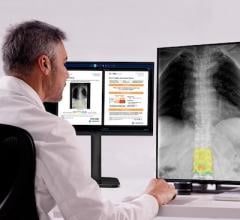
December 27, 2021 — In a recent study published in Nature Biomedical Engineering, a team led by researchers at Massachusetts General Hospital (MGH) has demonstrated that magnetic resonance imaging (MRI) and artificial intelligence (AI) can be used to detect early signs of tumor cell death in response to a novel virus-based cancer therapy.
Recently, a promising therapeutic virus that selectively kills cancer cells while sparing normal tissue has sparked hope for treating aggressive brain tumors. To further optimize the virus-based therapy, frequent non-invasive monitoring of the treatment response must be performed. This monitoring is crucial for understanding the interactions between the virus and cancer cells, such as the extent of virus spread within the tumor and therapeutic response.
The researchers used quantitative molecular MRI images to measure multiple tissue properties, including tissue pH and protein concentration, that are altered with cell-death. This method allows therapeutic response monitoring much earlier than with previous techniques. The treatment responses were visible just 48 hours after viral-therapy, long before any changes in tumor volume were observed.
“We programmed an MRI scanner to create unique signal “fingerprints” for different molecular compounds and cellular pH. A deep learning neural network was then used to decode the fingerprints and generate quantitative pH and molecular maps,” said Christian Farrar, PhD, an investigator and faculty at the Athinoula A. Martinos Center for Biomedical Imaging. “The MRI molecular fingerprinting method was validated in a mouse brain tumor study where the tumors were treated with a novel virus-based therapy that selectively killed cancer cells.”
To maximize the efficiency of this treatment approach, the researchers developed a method for the detection of tumor cell death caused by the virus. This has allowed for the early and rapid detection of treatment-responsive tumor regions. Recently, the researchers have implemented this method to quantify cellular pH and molecular compounds in the healthy human brain. Future investigation of this approach in human brain tumor patients would help to optimize these virus-based therapies
“This study demonstrates the strength and promise of implementing computerized AI-based technology in medicine for the noninvasive investigation of biological processes that underlie disease,” said Or Perlman, PhD, a research fellow at the Athinoula A. Martinos Center for Biomedical Imaging. “One of the most interesting and key components for the success of this approach was the use of simulated molecular fingerprints to train the machine learning neural network. This concept could potentially be expanded and investigated for solving other medical and scientific challenges.”
This study describes a new method for detecting tumor cell death non-invasively using MRI. The capacity to do this could be useful for non-invasive monitoring of cancer treatment, potentially improving patient care and tailoring the treatment to an individual patient. The same approach might also be beneficial for detecting and characterizing other medical conditions where elevated cell death occurs, such as stroke and liver disease. While the study was mainly validated using a mouse brain tumor model, the researchers have demonstrated the ability to use the same method for producing quantitative pH and molecular maps in rat stroke models and healthy humans. In the future, they plan to further explore the applicability of this non-invasive imaging approach in patients with brain tumors and stroke.
For more information: www.massgeneral.org


 December 05, 2025
December 05, 2025 









